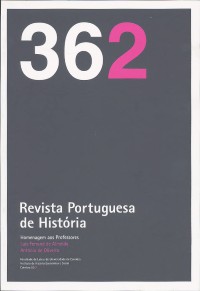Please use this identifier to cite or link to this item:
https://hdl.handle.net/10316.2/46031| DC Field | Value | Language |
|---|---|---|
| dc.contributor.author | Braga, Paulo Drumond | - |
| dc.date.accessioned | 2019-03-19T14:55:41Z | |
| dc.date.accessioned | 2020-10-05T05:41:48Z | - |
| dc.date.available | 2019-03-19T14:55:41Z | |
| dc.date.available | 2020-10-05T05:41:48Z | - |
| dc.date.issued | 2003 | - |
| dc.identifier.issn | 0870-4147 | - |
| dc.identifier.issn | 2183-3796 (digital) | - |
| dc.identifier.uri | https://hdl.handle.net/10316.2/46031 | - |
| dc.description.abstract | A décima reapareceu, por alvará de D. José, de 26 de Setembro de 1762, como um dos meios para enfrentar o conflito que Portugal começou então a travar com a Espanha, a chamada “Guerra Fantástica”, repercussão ibérica da Guerra dos Sete Anos. No caso de Lisboa, a regulamentação pombalina era clara: a cobrança far-se-ia rua a rua, registando-se tudo em livros devidamente encerrados e rubricados. Tais livros, que se guardam no arquivo do Tribunal de Contas, em Lisboa, constituem uma fonte importantíssima para o conhecimento da estrutura sócio- -profíssional da mais importante cidade portuguesa da segunda metade do século XVIII e têm sido utilizados por diversos historiadores. A partir dos dados extraídos dessa fonte procura- -se uma radiografia do comércio alimentar na Lisboa pombalina. | por |
| dc.description.abstract | The “décima” (a revenue tax of 10% created in 1641 ) became effective again by royal charter of 26 September of 1752, as an expedient to face the Portuguese-Spanish conflict, the so called “Fantastic War” (“Guerra Fantástica”), an iberian extension of the Seven Years War. As far as Lisbon was concerned, the regulations for the exaction were quite clear: the tax should be collected in every single street, the income being registered in books subject to strict formal requirements (closing statement and signature). Those books are now kept in the archives of the ‘Tribunal de Contas’ in Lisbon, and represent an extremely useful source of information about the social and professional structure of the most important city in Portugal in the second half of the 18th century. They have already been used by several historians. From them we can also pick up relevant data which allow us to make a sketch of the food commerce network in 18th century Lisbon. | eng |
| dc.language.iso | por | - |
| dc.publisher | Imprensa da Universidade de Coimbra | - |
| dc.rights | open access | - |
| dc.title | Comércio Alimentar na Lisboa pombalina | por |
| dc.type | article | - |
| uc.publication.collection | Revista Portuguesa de História nº 36 vol. 2 | - |
| uc.publication.firstPage | 5 | - |
| uc.publication.issue | 36 | - |
| uc.publication.lastPage | 14 | - |
| uc.publication.location | Coimbra | - |
| uc.publication.journalTitle | Revista Portuguesa de História | - |
| uc.publication.volume | 2 | por |
| dc.identifier.doi | 10.14195/0870-4147_36-2_1 | - |
| uc.publication.orderno | 1 | - |
| uc.publication.area | Artes e Humanidades | - |
| uc.publication.manifest | https://dl.uc.pt/json/iiif/10316.2/46031/271024/manifest?manifest=/json/iiif/10316.2/46031/271024/manifest | - |
| uc.publication.thumbnail | https://dl.uc.pt/retrieve/12202768 | - |
| item.fulltext | With Fulltext | - |
| item.grantfulltext | open | - |
| Appears in Collections: | Revista Portuguesa de História | |
Files in This Item:
| File | Description | Size | Format | |
|---|---|---|---|---|
| comercio_alimentar_na_lisboa_pombalina.pdf | 383.53 kB | Adobe PDF |  |
Items in DSpace are protected by copyright, with all rights reserved, unless otherwise indicated.
